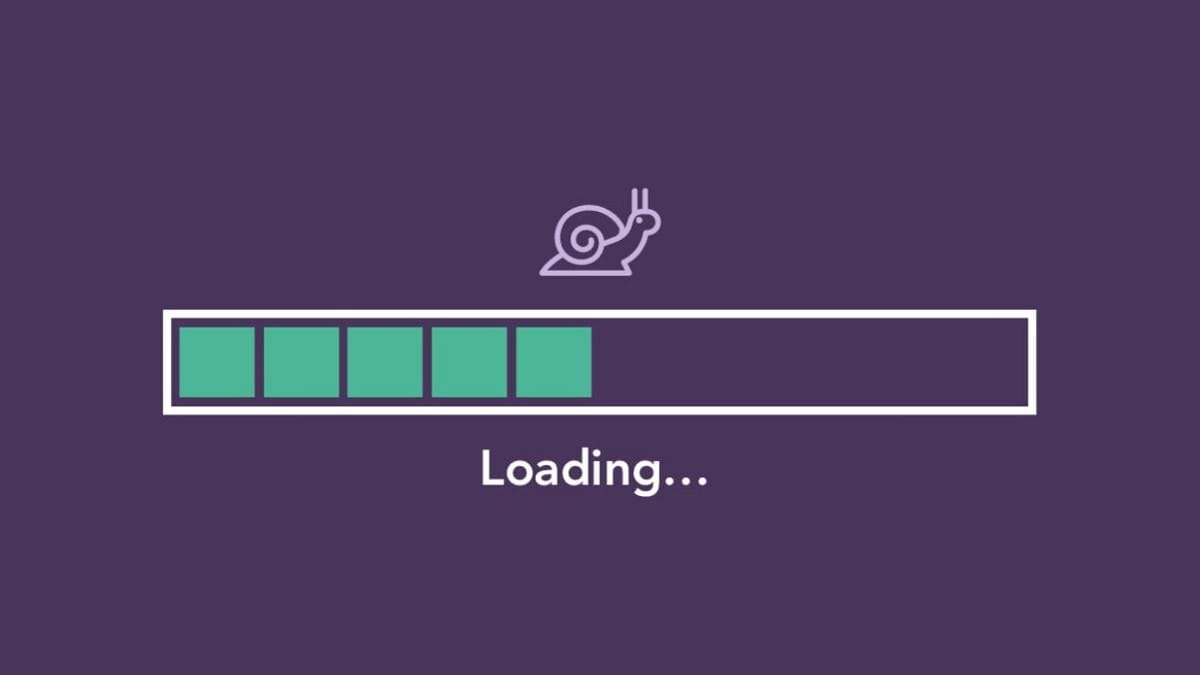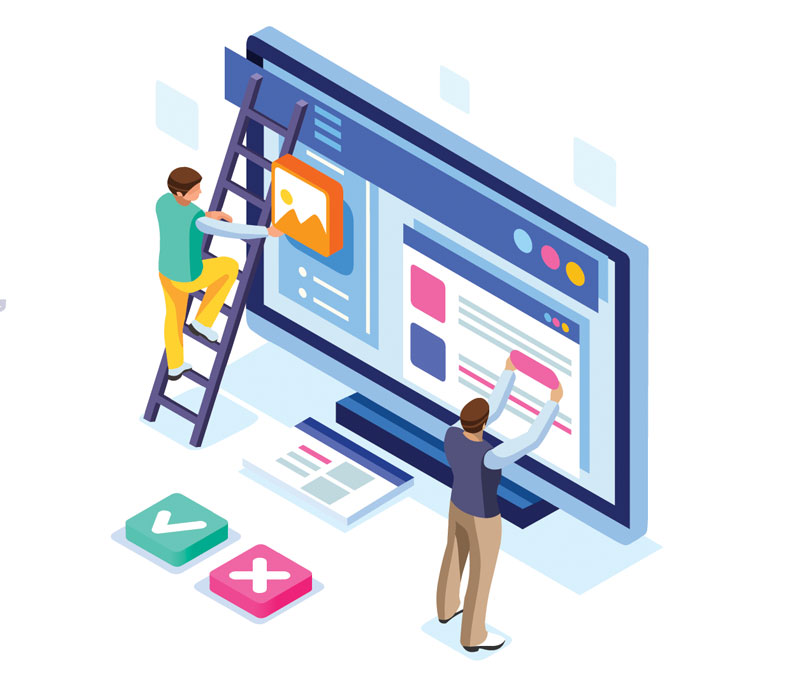Any company, at some stage in its activity, will reach a point where the already-built website needs to be redesigned. Website redesign is part and parcel of the growth of the company and a major competitive issue. This is because the website is a showcase when attracting new customers and partners and gives credibility to the company in terms of image.
But how do you recognize if it’s time for a change? When should you decide to upgrade your site? What things should you do before redesigning your company website? What are the steps to properly redesign a website? In our ultimate website redesign guide article, we will tell you everything you should know about redesigning websites and in the process, answer all of your questions regarding website redesign.
What Is Website Redesign?
Website redesign is the process of making changes to the overall design, layout, or content of a website. A redesign can include updating the look and feel of the website, rearranging the navigation, and/or simply adding new features and functionality. The objective of a website redesign is frequently to improve usability, increase the website’s visual appeal, and/or make the website more effective in achieving its intended purpose.
Redesigning website can also be prompted by technological advances and changing web design trends. As an example, a website that was designed a few years ago simply may not be optimized for mobile devices, currently the most common way to access the Internet. Thus, a website redesign can make it more usable on smaller screens and make sure that it is accessible to the largest possible audience.
How Often Should You Redesign Your Website?
No matter whether a company is selling online or running a service sector, redesigning its website will become a necessity over the years. Consumer trends are continuously changing, the development of new technologies is evident, and there are also security guidelines. With all these factors, we need to regularly check whether it’s time to redesign the website.
However, there is no explicit time after which you should decide to redesign your website. Nevertheless, from our experience, it is best to perform a website redesign once every few years, depending on the industry and how dynamic it is in terms of technology. For instance, fashion online stores require more frequent updates compared to an industrial company’s website.
Signs Signaling That Redesigning Website Is Necessary
There are at least several signs that, if noticed, should give you a red light in your mind. Website redesign in the following cases should help bring you new customers and improve your situation in the market. Without doing so, you are risking missing more opportunities and the chance to increase sales.
Poor Bounce Rate
Your website has a high bounce rate, meaning that a large number of visitors quickly leave the website after visiting it. This might be a sign that the website fails to meet the visitors’ needs or is difficult to navigate. For that matter, it could also mean that the overall user experience is poor. When this happens, a website redesign which improves the content structure and organization of the site can address the issue.
Outdated Website Design and Layout
Web design trends are always changing, and having an outdated website may look old-fashioned and unattractive. For example, web design has been moving towards a more minimalist and clean look in recent years, incorporating more white space and keeping layouts simple. Having a website that was designed several years ago can have unclear layouts, and overly loaded graphics, all of which can make the website look both unprofessional and outdated.
Redesigning a website can help give it a more modern and professional look in keeping with current design trends. These include a clean and simple layout, increased white space, a color scheme that matches the brand and more. Giving the website a fresh and modern look may help build trust with visitors and increase conversion rates.
Slow Page Load Times
A website’s loading time is a critical factor when it comes to user experience. When a website is taking too long to load, users are likely to get frustrated and leave the site, resulting in a high bounce rate. Furthermore, slow loading times may also negatively impact your SEO, as search engines will take a website’s loading time into account when determining its ranking.

Website redesign can help optimize the website for faster loading times by taking into account several factors, including optimizing the code and scripts by eliminating unnecessary code, utilizing more efficient programming practices, and keeping the use of third-party scripts to a minimum.
With these factors taken into consideration, a website redesign will help to significantly improve the loading times of the website, increasing the user experience and also improving the ranking of the website in search engines.
Not Mobile-friendly
As more people are accessing the Internet through their smartphones and other mobile devices, having your website optimized for mobile devices is critical. This is referred to as “mobile responsiveness” and involves designing a website capable of adapting to the different screen sizes and resolutions of various devices.
By doing a website redesign, you can make your website mobile-friendly by using a responsive design, simplifying the navigation and using a mobile-first approach, among others, and help to make the site more usable on smaller screens.
9 Steps To Redesign Your Website
Now that you have a better understanding of what a website redesign is and when you need to redesign your website, in the following we are going to talk about 10 steps you need for your website redesign to be successful.
1- Understand Your Audience
Before redesigning your website, you must have a clear understanding of your target audience. This includes information such as their demographics, their needs and goals, and how they interact with your website. This information can be gathered through user research and analytics. When you understand your audience, you will be able to make informed design decisions that will enhance the user experience and improve the chances of achieving your business goals.
2- Define Your Goals
Setting specific, measurable goals in mind can help guide the redesign process and make sure the new website achieves those goals. This will help define what elements must be changed and what areas to focus on. In addition, it will help to assess the performance of the website following the redesign and determine which areas need to be improved if you have specific goals in mind.
As an example, if you would like to increase the conversion rate, you may want to set the following goals:
- Increase the number of leads generated via the website by X%.
- Increase the number of sales made on the website by Y%.
3- Analyze Your Current Website
Through analyzing your current website, you’ll have a clear idea of what’s working, what’s not, and exactly how you can improve the site’s performance. Using this information, you will be able to make informed decisions regarding what changes need to be made throughout the redesign process to ensure that the new website is an improvement over the old one and that it helps the company achieve its goals.
4- Define Your Budget and Timelines
Redesigning a website may be a significant investment, considering both time and money. Being clear about your budget and timeline before starting the process is important to make sure the redesign is completed on time and within budget.
Having a clear budget will help you to prioritize what changes need to be made and what are important changes to make. Likewise, knowing the budget will help you make informed decisions about the design, development, and testing process and decide what can be done in-house and what needs to be contracted out.
Additionally, knowing the exact timeline for the redesign is important. This will help ensure that the redesign is completed on time and does not impact business operations. There should be a realistic timeline considering the scope and complexity of the redesign, the research, design and development work required, and the testing and launch preparations.

5- Keep SEO in Mind
Redesigning can have a big impact on the search engine optimization of your website. For this reason, planning for search engine optimization before, during, and after the redesign process is important. These include things like ensuring the site is mobile-friendly, using responsive design and keeping URLs consistent.
6- Proper Planning and Design
Based on the findings of the research done so far, create a plan for the redesign that outlines the specific changes that should be made and how they should be implemented. This may include creating wireframes or mockups, outlining the new site content structure, and identifying the technologies that will be used to build the website.
Also, creating visual representations of the new design is an essential step in the redesign process. This can involve a variety of different elements such as color schemes, layouts, and typography to build a coherent and visually appealing design.
Using these visuals you can communicate the new design to stakeholders and team members, and seek feedback. Make sure they accurately reflect the final design and that they are made available to the development team so that they can incorporate the new design into the website.
7- Developing the New Website
As soon as the design is ready, you can start building the website using web technologies such as HTML, CSS, JavaScript or other programming languages. This step includes coding, implementing the design, back-end configuration, and integration with any required systems or platforms.
It’s important to know that this process is not a one-time affair and that ongoing maintenance, updates, and upgrades are needed to keep the site running smoothly; you might also need to monitor performance and security, and fix bugs and issues as they come up. Working closely with the development team to make sure the design is implemented correctly and that any problems are identified and fixed as soon as possible is also important to ensure a successful launch.
8- Testing
Testing is an important step in the website redesign process. After the website is designed, it is important to test it with different browsers, devices, and screen sizes to ensure that it is fully functional and easy to use. Doing so is often referred to as cross-browser, cross-device, and cross-screen compatibility testing.
The tests should include popular web browsers such as Google Chrome, Firefox, Safari, and Microsoft Edge, and also consider different versions of these browsers. Consider also testing your website on different devices (e.g. desktop, tablet, and mobile) to ensure that it is fully responsive and appears well on different screen sizes.
Furthermore, user testing and A/B testing are critical steps to validate the website’s design and content. With user testing, you can observe real users as they navigate the site and gather feedback on their experience. Based on this feedback, any issues with the design or content can be detected and the necessary changes can be made before the website goes live.

9- Launch the Redesigned Website
Now that the website has been tested and finalized, the time has come to launch the new website and redirect or shut down the old one. Before launch, it is important to have a plan for the transition to minimize disruption to users and search engines.
The following are some steps you can take to guarantee a smooth launch:
- Set up redirects: set up redirects for any pages that have been moved or renamed during the redesign. This ensures that all users who bookmarked the old page or cached it in their browser are redirected to the new page, and also transfers link juice from the old page to the new one.
- Notify your users: let your users know that the site has been refreshed and invite them to explore the new design. This can be done via email or a message on the site.
- Monitor and maintain: Keep monitoring the site’s analytics to make sure the redesign is working the way you want it to. Make data-driven improvements based on analytics, user feedback, and testing. Similarly, monitor the site’s security and performance and fix any bugs that arise.
- Keep on optimizing: the launch of the new website is not the end of the redesign process, but just the very beginning. Be sure to keep an eye on the site’s analytics and keep making data-driven improvements, optimizing the site’s content and design, and ensuring that it is fully optimized for search engines.
Why Choose Opza for Your Website Redesign?
One thing worth mentioning is that the website redesign process can be time-consuming, and it is crucial to have a detailed plan and work with a professional web development team to make sure that the redesign is successful.
Also, website redesign has to pay off in terms of business, and that’s what the debate usually comes down to. The above points will help you smoothly redesign your website. If you are still uncertain, talk to us and we will gladly advise you on the most profitable solution.
As an agile development agency, we at Opza can help you with your website redesign project. You can take advantage of our expertise and experience to create a website that meets your users’ needs and is delivered on time and within budget. We provide different services including web app development, AI-powered systems, algorithm design and many others.
Unlock the secrets of cutting-edge web design trends for 2023. Read the article now and elevate your web design game!
Ready to Revamp Your Online Presence?
The digital landscape is evolving, and your website should too. Whether it’s updating for the latest design trends, enhancing user experience, or optimizing for mobile devices, our team at Opza has the expertise and tools to transform your website into a modern and effective digital platform.
Your company’s growth, image, and credibility are intertwined with the quality of its website. Don’t let an outdated design or subpar functionality hold you back. Take the leap into the future with a website that not only looks great but also drives results.






